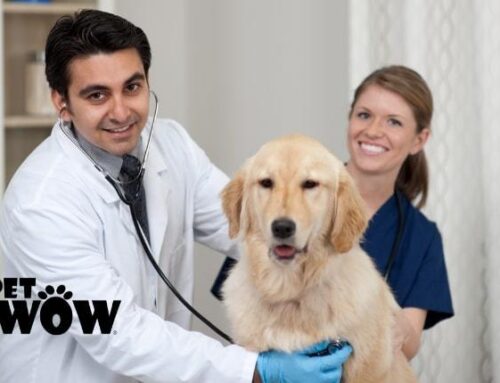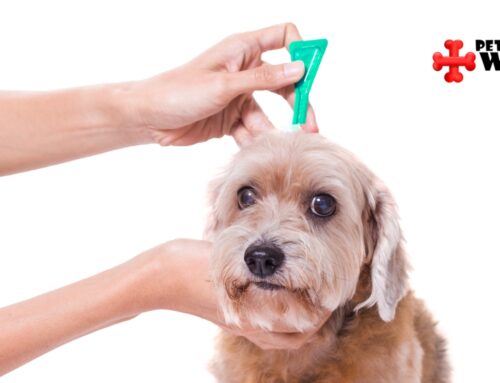“Be the hero your pet thinks you are.” This isn’t just a saying; it’s a call to action. Emergencies can happen in the blink of an eye, and when they do, every second counts.
When it comes to our furry friends, we all want to be prepared for any situation. But how many of us can say we’re ready to handle a pet emergency? It’s a troubling thought, yet only a fraction of pet owners have a pet first aid kit at home. This lack of preparation can turn minor mishaps into significant emergencies.
Consider this: vomiting and diarrhea are among the top reasons pets are rushed to the vet, and accidents like being hit by a car can happen to tens of thousands of pets each year. With risks like these, having a first aid kit tailored for your pet isn’t just helpful; it’s essential.
Creating a first aid kit for your pet means you’re equipped to handle everything from minor cuts to major emergencies. It’s about more than just bandages and antiseptics; it’s about peace of mind.
Knowing you have the tools to provide immediate care can make all the difference, potentially saving you from the heartache of seeing your pet in distress and the high costs of emergency vet visits.
Let’s ensure you’re ready to act when your pet needs you the most. Continue reading and learn the simple steps to assemble a life-saving kit. Discover the must-have items that should be in every pet owner’s home and how these essentials can be the difference between panic and preparedness.
Why Does Every Pet Owner Need a First Aid Kit?
No pet owner wants to feel helpless in an emergency. A first aid kit for your pet equips you to handle minor injuries or stabilize your pet on the way to the veterinarian.
A first aid kit for your pet is crucial for handling unexpected situations such as cuts, sprains, or sudden illnesses.
Owning a kit provides several benefits: it ensures safety by allowing you to address injuries promptly, offers peace of mind knowing you’re prepared, and enhances your ability to respond swiftly and effectively.
This readiness is vital in preventing small issues from becoming serious emergencies.
What Should Be Included In Your Pet’s First Aid Kit?
Regarding our pets, we spare no effort to ensure their happiness and well-being. Yet, many pet owners find themselves unprepared for unexpected health issues that may arise.
Creating a first aid kit for your pet is a proactive step that can make a significant difference in an emergency.
A well-stocked first aid kit for your pet should include:
Gauze Pads and Rolls: For wrapping wounds or muzzling an injured animal.
Adhesive Tape: To secure gauze or bandages without sticking to fur.
Antiseptic Wipes: To clean small cuts or abrasions.
Digital Thermometer: To check your pet’s temperature. Remember, it should be used rectally.
Tweezers: To remove splinters or ticks.
Scissors with Blunt Ends: For cutting bandages or freeing your pet from entanglements.
Disposable Gloves: To maintain hygiene while treating wounds.
Saline Solution: To clean out wounds or flush irritants from eyes.
Ice Pack: To reduce swelling or pain.
Emergency Contact Information: Including your vet’s phone number and the nearest animal hospital.
Customizing Your Kit For Every Situation
While the above items form the core of your pet’s first aid kit, consider customizing it based on your pet’s specific needs.
Emergency Situation #1: Cut Paw
For instance, if a dog cuts its paw during a hike, cleaning the wound with antiseptic and bandaging it securely can prevent contamination and protect the injury until professional veterinary care is available.
You may also add:
- Antiseptic Wipes or Spray: Clean the wound before bandaging.
- Non-Adherent Pads: These won’t stick to the wound, making bandage removal easier.
- Bandage Wrap: Provides support and keeps the wound clean.
- Muzzle (optional): For anxious or fractious pets to ensure safety during treatment.
Emergency Situation #2: Foreign Object in Eye
If your cat gets a foreign object in its eye, gently flushing the eye with saline solution can help remove the irritant safely.
You might consider these too:
- Eye Dropper: For gently flushing the eye with saline solution.
- Eyewash Solution: Specifically formulated for flushing eyes without irritation. (Note: Consult your veterinarian before using any eyewash solution on your pet.)
Emergency Situation #3: Exposure to Cold
For example, if your pet suffers from exposure to cold, wrapping them in a thermal blanket can help prevent hypothermia while you seek further medical assistance.
Also, it might be handy to have these as well:
- Thermal Blanket: Helps regulate body temperature.
- Thermometer: Monitor your pet’s body temperature.
Emergency Situation #4: Examining a Wound
For instance, using a flashlight to examine a wound deeply embedded in your pet’s fur can ensure proper cleaning and treatment, especially in low-light conditions.
You might also want to add this to your kit:
- Paw Protection: Include booties or protective socks to shield injured paws or prevent dirt from entering wounds.
- Cotton Balls or Swabs: Clean wounds and apply medication.
- Antiseptic Ointment: Soothe and protect minor wounds. (Note: Consult your veterinarian before using any ointment on your pet.)
Emergency Situation #5: Injured Paw
For example, if your pet injures a paw, slipping on a protective bootie can prevent further injury and keep the area clean as you seek veterinary assistance.
You might also want to add this to your kit:
- Paw Protection: Booties or socks to shield the paw and prevent further contamination.
- Non-Adherent Pads: Protect the wound while allowing for breathability.
- Bandage Wrap: Secure the paw protection or pads in place.
Step-by-Step Guide to Assembling Your Kit
Creating a first aid kit for your pet is easier than you might think. With just a few steps, you can assemble all the essentials to ensure you’re ready for any situation.
Here’s a simple guide to help you gather everything you’ll need for your pet’s safety and well-being.
Step 1: Gather Essentials
Collect all necessary items, including bandages, antiseptics, tweezers, saline solution, and a digital thermometer.
Step 2: Choose the Right Container
Use a durable, waterproof container that’s easy to open. A toolbox or tackle box can be ideal.
Step 3: Organize and Label
Organize items into categories (e.g., wound care, medications). Clearly label each item or category for quick access during emergencies.
Step 4: Store Properly
Store the kit in a cool, dry place that’s accessible but safe from children and pets.
Step 5: Maintenance
Regularly check the contents of your kit and replace used or expired items at least once a year to ensure everything is functional and ready to use.
Step 6: Portability
Ensure the kit is easily portable for outings or trips with your pet. Consider a smaller version for your car.
Keep Your Furbaby Safe With The Best Veterinary Care!
While a first aid kit is a crucial tool in managing minor injuries and stabilizing your pet during emergencies, it does not replace the expertise of professional veterinary care. Regular check-ups are essential to prevent emergencies and ensure your pet’s overall well-being.
If you haven’t yet prepared a first aid kit, now is the time to start. For advice on customizing your kit and to ensure it includes everything your pet might need, don’t hesitate to contact us at PetWow.
Our team is here to provide regular veterinary services and expert guidance to keep your pet healthy and happy. Call us or visit our clinic today!






